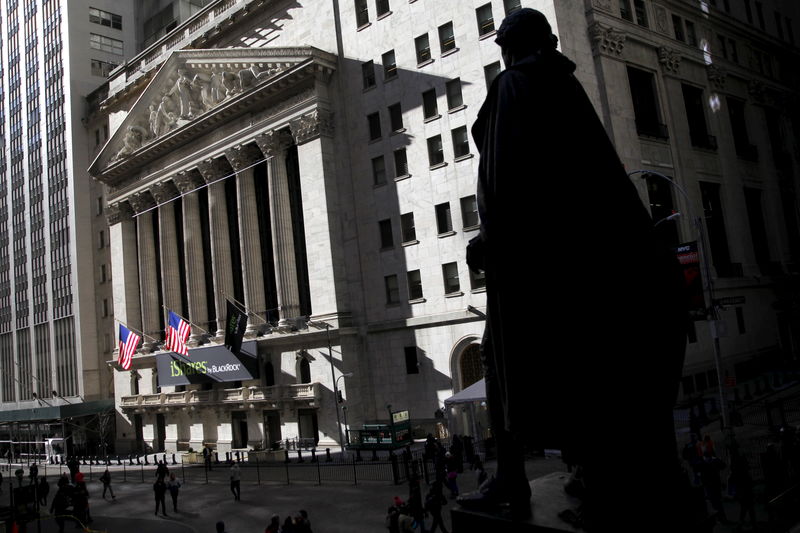© Reuters.
Investing.com — Shares of Arm (NASDAQ:) rise in premarket trading in the United States, putting them on track to extend their strong start after Thursday’s highly anticipated debut as investors eye another public listing of the Instacart grocery delivery service. Elsewhere, workers at factories owned by three major automakers go on strike, as new data suggests China’s faltering economy may be starting to stabilize.
1. Futures mixed after Arm IPO, positive session
U.S. stock futures were mixed on Friday after shares of chipmaker Arm surged on their debut day, raising hopes of a recovery in technology company prices.
At 05:47 ET (0947 GMT), the contract added 84 points or 0.2%, rose 4 points or 0.1% and slipped 15 points or 0.1%.
All three major indexes posted positive sessions on Thursday, with stocks supported by the success of Arm’s initial public offering (IPO), backed by SoftBank. Economic data on Thursday also showed that growth in so-called “core” producer prices, excluding volatile items such as food and fuel, slowed in August – even though the main measure of prices received by businesses for their goods and services accelerated more than expected during the month.
The data bolstered bets that the Federal Reserve, which has said it depends on the data in future policy decisions, will keep interest rates unchanged at its next meeting this month. New economic data due out later in the day, including preliminary data on consumer sentiment for September, could help clarify the policy path forward for both Fed officials and markets.
2. Arm’s debut raises hopes for a resurgence of tech IPOs
Arm shares rose more than 6% in U.S. premarket trading after surging nearly 25% in their first day of trading on the .
The stock, which had an IPO price of $51, closed at $63.59, giving the British company a fully diluted value of nearly $68 billion. The surge suggests that investors were won over by Arm’s reported push to diversify its business from the ailing smartphone market into emerging sectors such as artificial intelligence and automobiles.
SoftBank (TYO:), which holds about a 90% stake in Arm, raised about $5 billion from the deal. The tech investment giant was planning to sell Arm to chipmaker Nvidia (NASDAQ:) last year for $40 billion, but the deal fell through due to opposition from regulators.
Arm’s IPO has reignited enthusiasm for the recently dormant tech IPO market, with investors eyeing Instacart’s planned public listing. Buoyed by Arm’s debut, the food delivery chain is now expected to raise its reported stock price to between $28 and $30 apiece, according to people familiar with the matter cited by the Wall Street Journal. The group was targeting a price between $26 and $28 when the shares begin trading next week.
3. UAW strike at major auto plants
Members of the United Auto Workers went on strike for the first time ever at major assembly plants after talks between the union and the so-called “Big Three” automakers over a new labor contract collapsed.
The strike, which saw just under 13,000 workers take to the picket lines, affected factories in Michigan, Ohio and Missouri owned by General Motors (NYSE:), Ford Motor (NYSE:) and Jeep maker Stellantis (NYSE:). ). According to the Wall Street Journal, other factories may also be affected by sporadic industrial action.
UAW President Shawn Fain vowed that the strikes will continue until workers “get our share of economic justice,” CNBC reported.
In a statement, Ford said the conditions presented by the UAW would lead to “unsustainable” labor costs, adding that the union’s proposals show “little movement” from their initial demands.
The negotiations, which have so far proved fruitless despite the involvement of US President Joe Biden, worry some economists about a broader impact on the US economy. Together, Ford, GM and Stellantis produce about half of the 15 million cars produced in the United States each year.
4. Potential signs of recovery for the Chinese economy
The Chinese site rose more than expected in August, raising hopes of a nascent recovery in the key sector, thanks to improving local demand and a continued flow of monetary support from the government.
Industrial production rose 4.5% in the month from a year earlier, according to data provided by the Office for National Statistics on Friday. The reading was above forecasts of 4% growth and faster than July’s 3.7%.
Output for the year to August also rose to 3.9% from 3.8% in the previous month, in line with estimates.
A low annual comparison base – China still had large swaths of the country under COVID restrictions in 2022 – aided the positive data. However, the stronger-than-expected reading and site recovery hinted at some recovery in economic activity, which has faltered after initial momentum in the wake of Beijing’s decision to ease tough COVID rules.
Meanwhile, the People’s Bank of China announced on Thursday it will reduce the reserve requirement ratio for local banks by 25 basis points – the second cut this year – in order to pump more liquidity into the world‘s second-largest economy and potentially support growth .
5. Oil Extends After Chinese Data and Stimulus
Oil prices rose on Friday to their highest level since last November, thanks to better-than-expected economic data and further stimulus measures from top importer China.
China’s refinery output also rose to a record high in August, data showed on Friday, thanks to solid summer travel demand and a rush to take advantage of strong export margins, which led processors to keep high production rates. The refining data comes as markets try to gauge whether production cuts by top producers Saudi Arabia and Russia will keep supplies tight this year.
At 5:49 a.m. ET, futures were up 0.4% at $90.50 a barrel, while the contract rose 0.3% to $94.00.
Both benchmarks rose about 4% from a week ago, in line with their third weekly gain.
